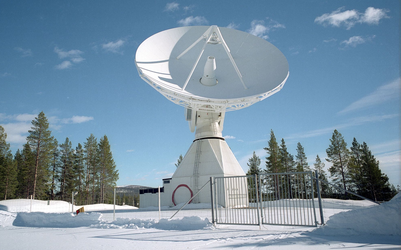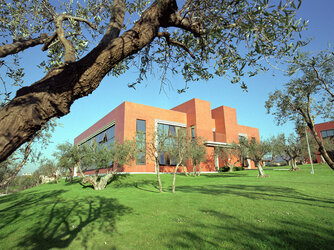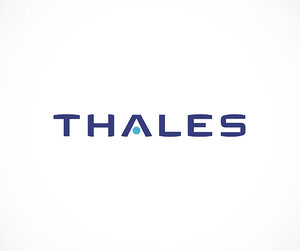Facts and figures
Full name: Gravity field and steady-state Ocean Circulation Explorer
Launched: 17 March 2009 from the Plesetsk Cosmodrome, Russia
Duration: After 4 years and 8 months orbiting Earth, the mission came to an end on 11 November 2013, far exceeding its 20-month design life
Mission control: European Space Operations Centre (ESOC), Darmstadt, Germany
Data download: Kiruna (Sweden) and Svalbard (Norway) ground stations
Processing & archiving: ESA’s Earth observation centre in Italy (ESRIN) and the distributed High-level Processing Facilities
Number of instruments: 3
Mission cost: €350 million (including launcher and operations)
Orbit: about 260 km altitude, polar, Sun-synchronous
Mass: 1100 kg
Size: 5.3 m long, about 1 m body diameter
Propulsion tank: 40 kg of xenon
Mission objectives
– to determine gravity-field anomalies with an accuracy of 1 mGal (where 1mGal = 10–5 ms–2).
– to determine the geoid with an accuracy of 1-2 cm.
– to achieve the above at a spatial resolution better than 100 km.
Geoid accuracy: 1 - 2 cm vertically with 100 km spatial resolution
Gravitational acceleration at Earth’s surface is about 9.8 m/s², varying from a minimum of 9.788 m/s² at the equator to a maximum of 9.838 m/s² at the poles.
The six accelerometers (three pairs in three orthogonal directions) are some 100 times more sensitive than any previously flown in space.
Industrial Core Team
Thales Alenia Space (Italy) – satellite prime contractor
EADS Astrium GmbH (Germany) – platform contractor
Thales Alenia Space (France) – gradiometer
ONERA (France) accelerometer & system support
The Core Team led a consortium of 41 companies distributed over 13 European countries.
Technical details:
| Satellite | |
|---|---|
| Configuration |
Minimum cross-section in the direction of motion (1.1 m2) Approx. 9 m2 solar array aligned in the orbit plane 1050 kg launch mass |
| Structure |
Several carbon fibre, reinforced plastic structural compartments; load-carrying external structure Structural dynamics: 110 Hz axial, 18 Hz lateral |
| Thermal control |
Passive with heaters High-thermal-stability gradiometer compartment (10 mK @ 5 mHz) |
| Electrical power |
24-32 Vdc unregulated bus; protected and redundant lines Fixed Gallium Arsenide (GaAs) cell solar array, 1300 W Lithium Ion (Li-Ion) battery, 78 Ah, made of 52 strings with 8 cells each |
| Attitude control |
Nadir pointing Only magnetorquers for attitude control Wide-field star trackers hybridised with gradiometer angular acceleration measurement Coarse Sun sensors and magnetometer for acquisition and safe mode AOCS/DFACS application software run in central computer |
| Drag control | Ion thrusters commanded in closed loop, based on gradiometer common-mode acceleration measurements |
| Reaction Control System (RCS) | 20 mN Kaufman-type ion thrusters (2x) |
| Data handling |
Packet telemetry Flexible and reallocatable packet sizes High-rate (10 Hz) gradiometer-to-computer link via 1553 bus for drag control command synthesis |
| Telemetry and Command | |
|---|---|
| RF |
S-band up- and down-link and ranging 2 hemispherical antennas on solar array edges |
| Telecommand | 4 Kbits/s |
| Telemetry | Up to 1.2 Mbps |















 Germany
Germany
 Austria
Austria
 Belgium
Belgium
 Denmark
Denmark
 Spain
Spain
 Estonia
Estonia
 Finland
Finland
 France
France
 Greece
Greece
 Hungary
Hungary
 Ireland
Ireland
 Italy
Italy
 Luxembourg
Luxembourg
 Norway
Norway
 The Netherlands
The Netherlands
 Poland
Poland
 Portugal
Portugal
 Czechia
Czechia
 Romania
Romania
 United Kingdom
United Kingdom
 Slovenia
Slovenia
 Sweden
Sweden
 Switzerland
Switzerland































